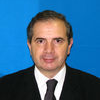Stochastic Equations in Fluid Dynamics, 2nd Edition
A special issue of Fluids (ISSN 2311-5521). This special issue belongs to the section "Mathematical and Computational Fluid Mechanics".
Deadline for manuscript submissions: 31 May 2024 | Viewed by 4134
Special Issue Editor
2. Department of Thermal Engineering, Russian University of Transport (MIIT), Obraztsova Street 9, Moscow 127994, Russia
Interests: stochastic equations; measure theory; strange attractors; bifurcations; fractals; chaos; turbulence in nature and in technical devices; single-phase and multiphase flows; thermodynamics
Special Issues, Collections and Topics in MDPI journals
Special Issue Information
Dear Colleagues,
In recent decades, solutions of stochastic equations for the study of processes in gases and liquids have been intensively studied. For an ideal and Newtonian fluid, we consider methods for solving the equation with random terms on the right side, as well as applications of these equations to various types of motion. The aim of the issue is to present the views of scientists on the methods of solving and prospects for applying stochastic equations (continuity, concentration, motion, energy and equations of state of matter) for studying processes in liquids and gases, as well as to demonstrate their results in the field of theory and numerical modeling of random processes. There are no restrictions on the length of articles.
This special issue will focus on the following areas:
- Theoretical solutions of stochastic equations for flows of an ideal fluid.
- Theoretical solutions of stochastic equations for Newtonian fluid flows.
- Numerical solution of stochastic equations for flows of an ideal fluid.
- Numerical solutions of stochastic equations for Newtonian fluid flows.
- Investigation of the generation of instabilities and bifurcations in liquids based on the Euler equation with a random term on the right side of the equation.
- Investigation of the onset of turbulence in a Newtonian fluid on the basis of on stochastic equations.
- Study of free and forced convection processes in liquids and gases in nature and in technical devices on the basis of stochastic equations.
- Study of the heat and mass transfer in single-phase fluids on the basis of stochastic equations.
- Equations and experiments.
- Stochastic equations of the hydrodynamic theory of plasma.
Prof. Dr. Artur V. Dmitrenko
Guest Editor
Manuscript Submission Information
Manuscripts should be submitted online at www.mdpi.com by registering and logging in to this website. Once you are registered, click here to go to the submission form. Manuscripts can be submitted until the deadline. All submissions that pass pre-check are peer-reviewed. Accepted papers will be published continuously in the journal (as soon as accepted) and will be listed together on the special issue website. Research articles, review articles as well as short communications are invited. For planned papers, a title and short abstract (about 100 words) can be sent to the Editorial Office for announcement on this website.
Submitted manuscripts should not have been published previously, nor be under consideration for publication elsewhere (except conference proceedings papers). All manuscripts are thoroughly refereed through a single-blind peer-review process. A guide for authors and other relevant information for submission of manuscripts is available on the Instructions for Authors page. Fluids is an international peer-reviewed open access monthly journal published by MDPI.
Please visit the Instructions for Authors page before submitting a manuscript. The Article Processing Charge (APC) for publication in this open access journal is 1800 CHF (Swiss Francs). Submitted papers should be well formatted and use good English. Authors may use MDPI's English editing service prior to publication or during author revisions.





